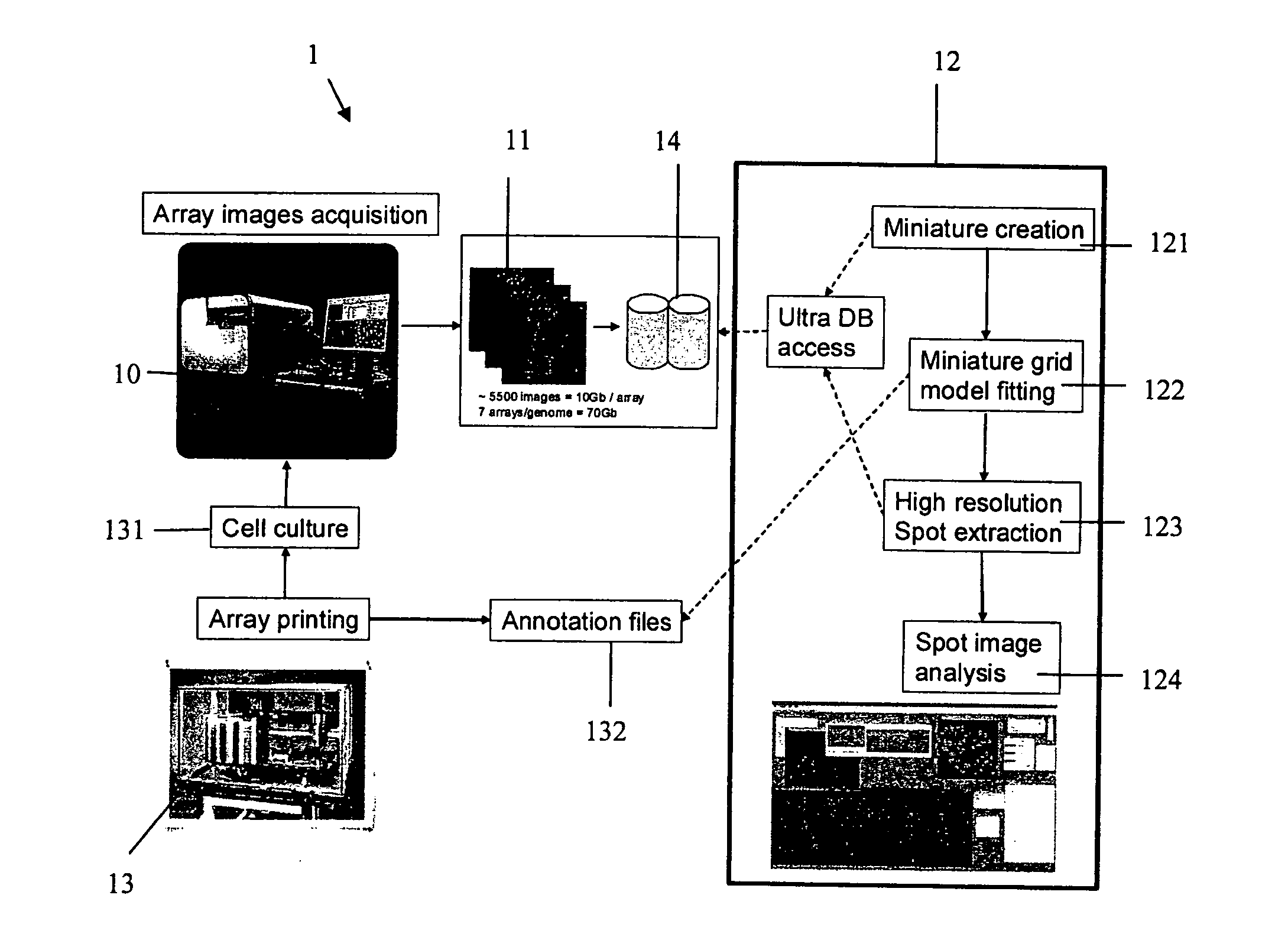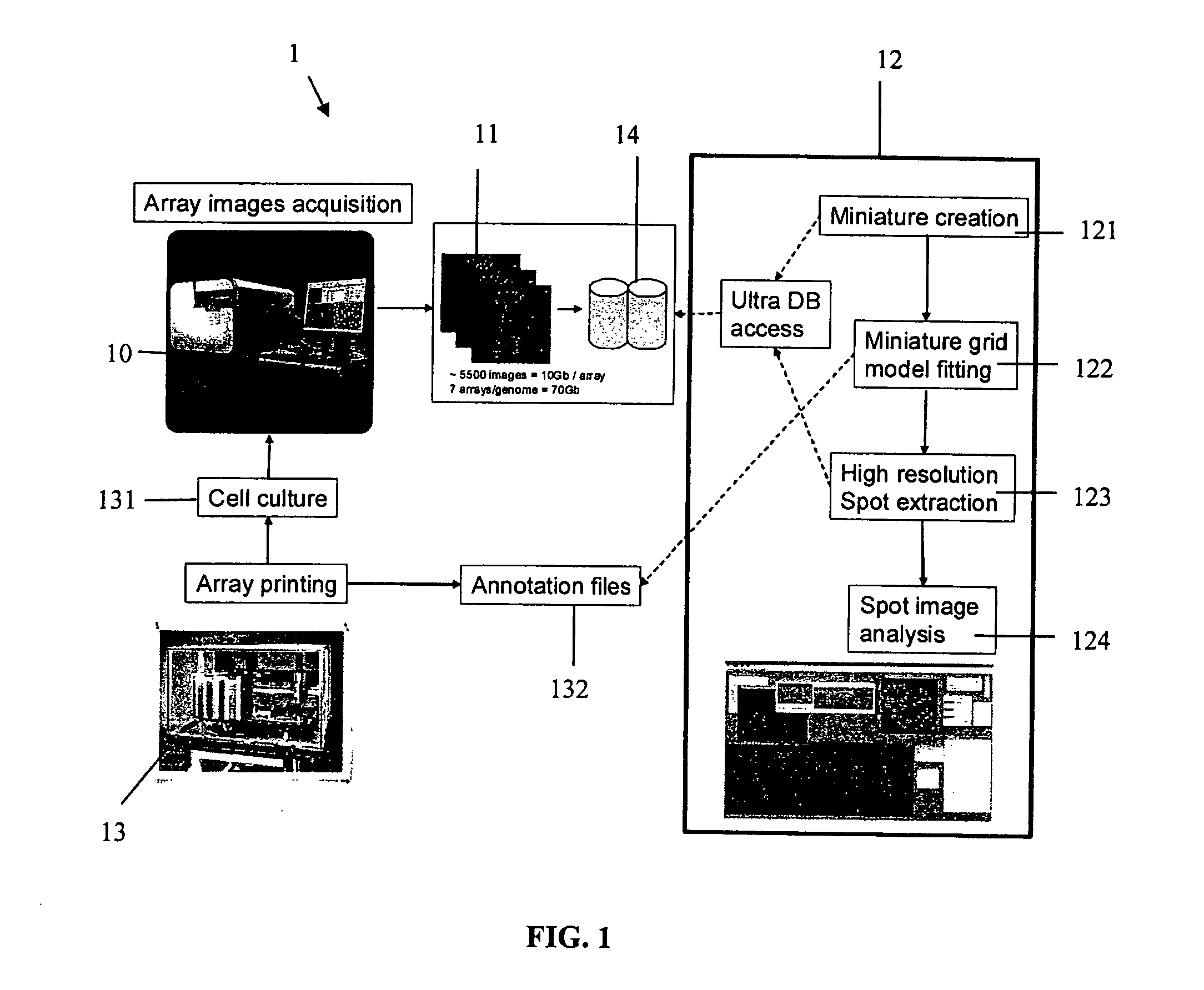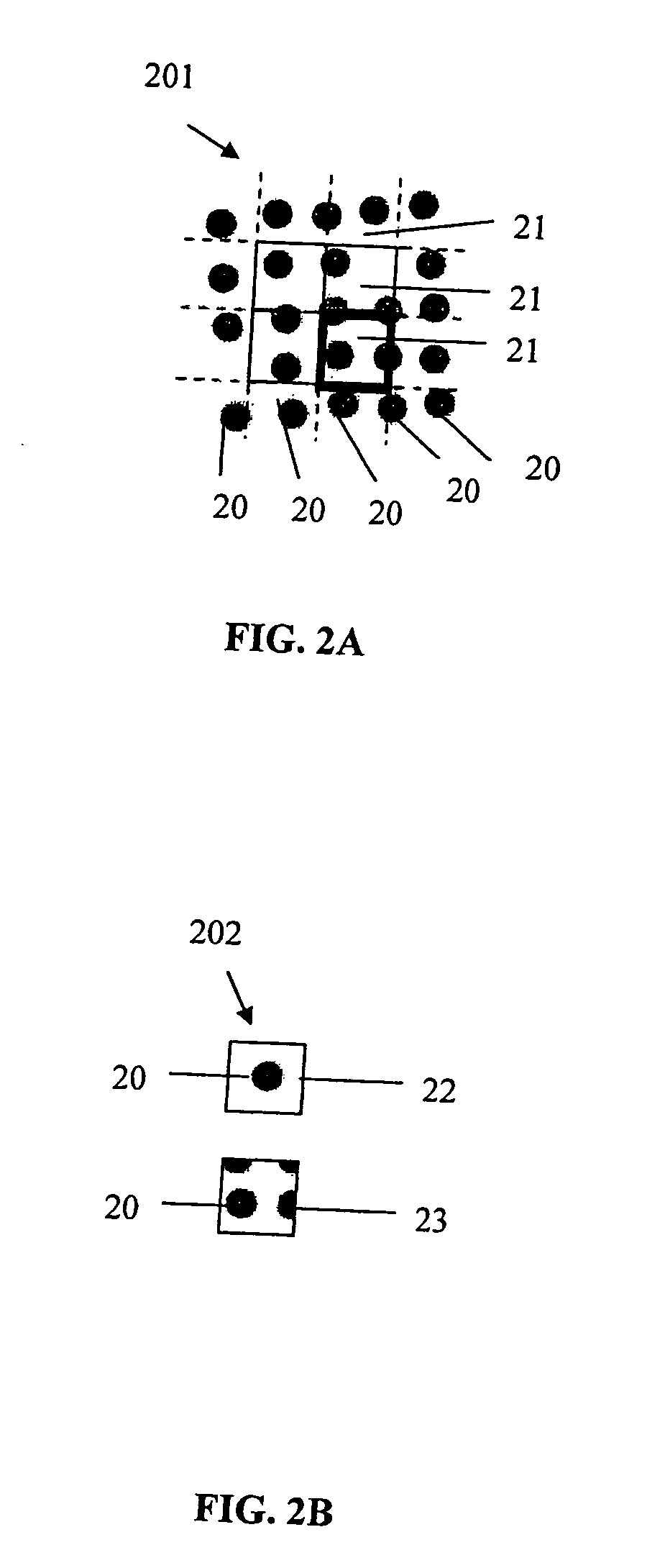Method and Apparatus for Imaging of Features on a Substrate
a technology of features and substrates, applied in the field of methods and apparatus for the imaging of features on a substrate, can solve the problems of high cost, inability to scan, and inability to meet the requirements of scanning, so as to speed up the processing steps, reduce the amount of data, and reduce the size
- Summary
- Abstract
- Description
- Claims
- Application Information
AI Technical Summary
Benefits of technology
Problems solved by technology
Method used
Image
Examples
Embodiment Construction
[0036]FIG. 1 shows an embodiment of an imaging apparatus 1 according to the present invention comprising an image acquisition device 10 for producing images of a substrate 11, an analysis device 12, a printer 13 and a data base 14.
[0037]The substrate 131 containing a large quantity of features is scanned with the image acquisition device 10 irrespective of the position of the features resulting in a single image or multiple partial images of the substrate 11.
[0038]For example, a scanning of a substrate 131 comprising a micro array with 3888 spots using a sub-cellular resolution may result in approximately 5500 grayscale images, or approximately 1800 rgb-images. In combination these images may represent the entire surface of the micro array. The images of the substrate 11 are stored in the data base 14 for further processing in the analysis device 12.
[0039]According to the embodiment as shown in FIG. 1 the analysis device 12 first accesses the data base 14 and reduces the resolution ...
PUM
 Login to View More
Login to View More Abstract
Description
Claims
Application Information
 Login to View More
Login to View More - R&D
- Intellectual Property
- Life Sciences
- Materials
- Tech Scout
- Unparalleled Data Quality
- Higher Quality Content
- 60% Fewer Hallucinations
Browse by: Latest US Patents, China's latest patents, Technical Efficacy Thesaurus, Application Domain, Technology Topic, Popular Technical Reports.
© 2025 PatSnap. All rights reserved.Legal|Privacy policy|Modern Slavery Act Transparency Statement|Sitemap|About US| Contact US: help@patsnap.com



